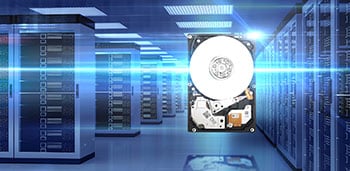- General Top
- SEMICONDUCTOR
- STORAGE
- COMPANY
-
My ToshibaSemicon
- Semiconductor Top
-
ApplicationsAutomotive
Body Electronics
xEV
In-Vehicle Infotainment
Advanced Driver-Assistance Systems (ADAS)
Chassis
IndustrialInfrastructure
BEMS/HEMS
Factory Automation
Commercial Equipment
Consumer/PersonalIoT Equipment
Healthcare
Wearable Device
Mobile
Computer Peripherals
-
ProductsAutomotive Devices
Discrete Semiconductor
Diodes
Transistors
Logic ICs
Analog Devices
Digital Devices
Wireless Devices
※
: Products list (parametric search)
Power SemiconductorsSiC Power Devices
※
: Products list (parametric search)
Isolators/Solid State RelaysPhotocouplers
Digital Isolators
Solid State Relays
Fiber Optic Transmitting Modules
※
: Products list (parametric search)
MOSFETsIGBTs/IEGTsBipolar Transistors※
: Products list (parametric search)
Diodes※
: Products list (parametric search)
MicrocontrollersMotor Driver ICsIntelligent Power ICs※
: Products list (parametric search)
Power Management ICsLinear ICs※
: Products list (parametric search)
General Purpose Logic ICsLinear Image SensorsOther Product ICsOther Product ICs
※
: Products list (parametric search)
-
Design & Development
Design & Development
Innovation Centre
At the Toshiba Innovation Centre we constantly strive to inspire you with our technologies and solutions. Discover how to place us at the heart of your innovations.
-
Knowledge
Knowledge
Highlighted Topics
Further Materials
Other
- Where To Buy
- Part Number & Keyword Search
- Cross Reference Search
- Parametric Search
- Stock Check & Purchase
This webpage doesn't work with Internet Explorer. Please use the latest version of Google Chrome, Microsoft Edge, Mozilla Firefox or Safari.
require 3 characters or more. Search for multiple part numbers fromhere.
The information presented in this cross reference is based on TOSHIBA's selection criteria and should be treated as a suggestion only. Please carefully review the latest versions of all relevant information on the TOSHIBA products, including without limitation data sheets and validate all operating parameters of the TOSHIBA products to ensure that the suggested TOSHIBA products are truly compatible with your design and application.Please note that this cross reference is based on TOSHIBA's estimate of compatibility with other manufacturers' products, based on other manufacturers' published data, at the time the data was collected.TOSHIBA is not responsible for any incorrect or incomplete information. Information is subject to change at any time without notice.
require 3 characters or more.
HDD or SSD for storage systems? – Comparing the performance

One of the hottest topics within technology circles is when to move from established technology to the newer version, taking into account the costs and any possible risks. IT professionals are engaged in making this decision, determining whether (and when) SSDs offer better performance than the older, but lower cost, HDD technology. As one of the leading drive manufacturers with significant experience in both HDD and SSD technology, Toshiba Electronics Europe set out to investigate the question as to whether an array of 10krpm HDDs can offer a better performance solution than Enterprise SSDs and, if so, under what conditions?
Toshiba selected a typical enterprise SSD storage configuration as a reference, comprising a total of eight 1.6TB SATA enterprise SSDs in a RAID6 configuration. These SSDs were installed in the reference server and driven by an internally connected RAID controller. To make the comparison, twenty-four HDDs with capacities up to 2.4TB were used as these cost approximately the same as the eight SSD. They were connected in a JBOD configuration using a second RAID controller and configured as RAID10, which is the fastest configuration with protection, albeit with a 50% redundancy overhead due to mirroring. As HDDs are relatively inexpensive when compared to SSDs, this was considered to be an equitable and valid test, even though the HDDs offered 28.8TB versus the 9.6TB from the SSDs.
The performance of both solutions was evaluated and compared using a synthetic random workload that included sixteen concurrent reading and writing tasks. This test generated the expected results; for small block sizes, which required a significant amount of data seeking, the resulting performance is dominated by the IOPS specification of the drive. In short, this means that the SSD solution offered significantly better performance.
However, as the block size rises, so the sequential performance specification increasingly dominates the result. Although SSDs are twice as fast as HDDs, when twenty-four HDDs are used in parallel, the HDD solution exhibits higher performance for block sizes above 64kB.
In real world applications, the actual workload usually comprises multiple different block sizes. This was approximated using a mix of block sizes from 4k to 2M. In this test, the HDD solution gave the best performance, showing that an array of HDDs with multiple spindles working in parallel can outperform SSD solutions in real world applications.
Toshiba has produced a detailed white paper covering this testing with comprehensive results tables. To download your copy, please click here:

